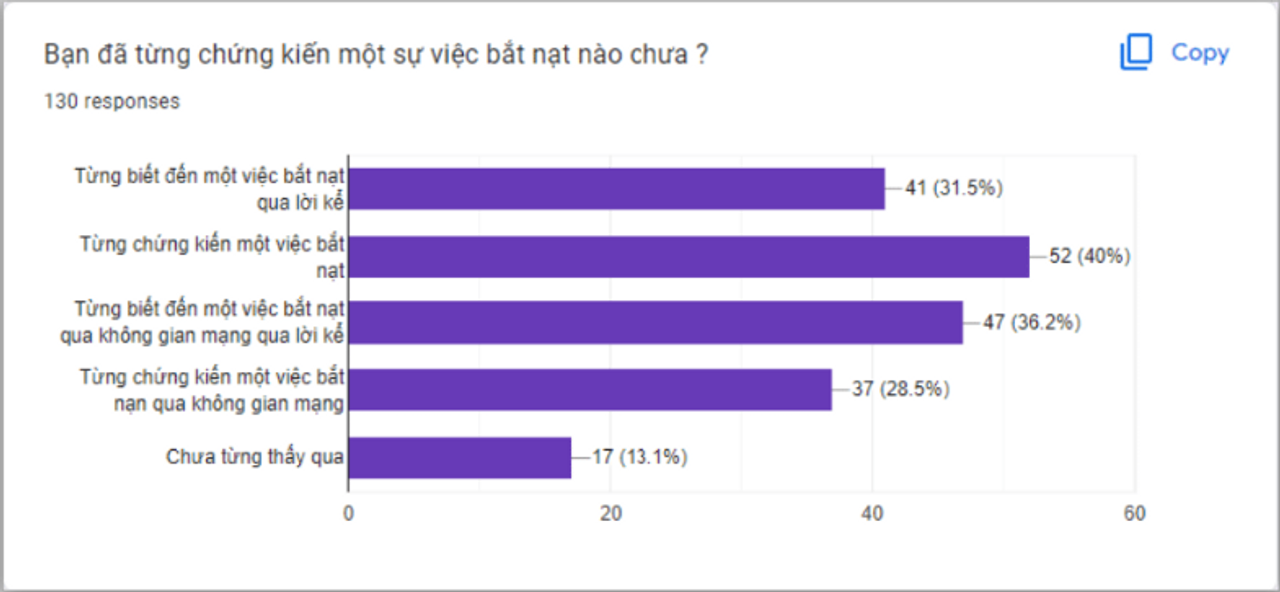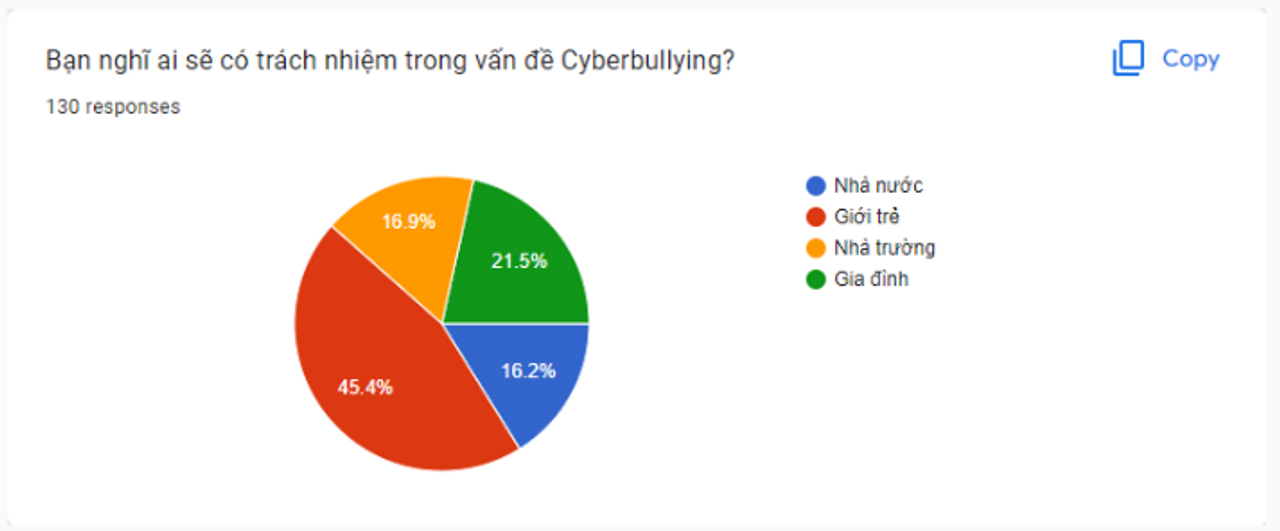BULLYING AND CYBERBULLYING AMONG STUDENTS
Cyberbullying project is implemented to help other people to avoid and advise some people to stay out and be kind to other people this...
1) ABSTRACT
Cyberbullying project is implemented to help other people to avoid and advise some people to stay out and be kind to other people this project shows us how to deal with cyberbullying and avoid it. Encompassing all teenagers aged 18 to 22.
This project not only takes a new about cyberbullying but this project gives you information knowledge and education about respect for other people.
The goal of the anti-cyberbullying initiative is to educate people about the issue, help them with any errors they make, advise them to avoid the situation altogether, and encourage them to treat others well in order to prevent cyberbullying. We learn lessons from this endeavor that apply to everyone, such as how to deal with it and how to avoid it. All teenagers between the ages of 18 and 22 are susceptible to cyberbullying, which is a typical occurrence.
In addition to presenting fresh facts on cyberbullying, this project also gives you knowledge, insight, and education on human decency.
When we finally finished our month-long search and investigation into each and every individual, we discovered a wealth of data on the number of people between the ages of 18 and 22 who had received online threats.
The data we collect are broadly defined cyber-attacks that are mostly against minors in each content.
2) Introduction
According to the results of a study published by Microsoft, 38% of people in 32 countries said that they have been involved in a bullying incident, either as a victim, a bully, or a witness. The result also provides that in Vietnam, 51% of internet users, including 48% of adults and 54% of teenagers, said they had been involved in a "bullying incident" (Anh Duong, 2020). 21% of respondents said they had been a victim and 38% were bystanders or witnessed bullying or harassment (Anh Duong, 2020).
Therefore, we do research on this problem to deepen our understanding in order to know how complex cyberbullying is in Dong Nai province and Ho Chi Minh city.
3) BODY
3.1) Background
Although the issue of bullying is still a hot topic, people are focusing more on school bullying and not paying much attention to one type of bullying that is becoming more and more popular: cyberbullying.
“One of the key messages that we can clearly see from their opinions is the need for children and young people involvement and partnering: When asked who should be responsible for ending cyberbullying, the opinions were equally divided between governments, internet service providers (private sector) and young people themselves,” said Najat Maalla Mjid (UNICEF, 2019)
“We are in this together and we must share the responsibility in partnership”. (UNICEF, 2019)UN Special Representative of the Secretary-General (SRSG) on Violence against Children
Based on a 2018 survey by market research company Ipsos of more than 20,000 respondents worldwide, it was revealed that Malaysia, Australia, and China are among the countries with the highest percentage of parents reporting their children to be a victim of cyberbullying (Anh Duong, 2020).
3.2) Methodology
This research was built on our own survey to elaborate on the research. We are using an online survey to simplify the information-gathering process and make it easier to send and receive information about the survey. The survey will ask if people know about some standard knowledge of bullying as well as cyberbullying; the percentage of people who have seen or have been bullied, their stories about that, etc… We used Google Forms for survey questions and spreading using GoogleMail–sending the survey to the college student, plus suggest them to share it to their friends. If the “sharing to your friends” effect worked out great, we would have enough participants to form this survey.
Cyberbullying is not a new phenomenon worldwide but it is still “new” for countries that are new to the internet. There are multiple pieces of research about this phenomenon, and there will not be limited information and data available in this field, though it is not many articles and data in Vietnam that can fully cover our research. So, we decided to make our own research to be able to gather data from our school, FPT University, and friends of FPTU students.
The research gathers individuals that mostly studied at FPT University, Ho Chi Minh City, and their friends, which will also mostly live in HCM City, or nearby provinces, even though a random selection of individuals from a broader area would be better for a survey. As a result, there are 130 people participating in this survey, mostly living in HCM City (72%), others living in Dong Nai (17.6%), and several other provinces (10.4%). Detailed data will be discussed in the Result section.
3.3) Result
Because the target we mainly focus on is FPTU students, there is no surprise that 89.2% of participants are between 18 to 22 years old, while 9.2% of them are below 18 years old(they can be neighbors or siblings of FPTU students) and a small number of people that over 25

According to the survey, participants seem to have some common knowledge of bullying as well as cyberbullying. This is a bright spot in this research when there are over 90% of them know about what they are going to be asked and take a survey of.


As we can see on the chart above, only 13.1% of participants did not hear any story about bullying, while the others (86.1%) have heard of it. Not only that, 68.5%(40% is bullying, 28.5% is cyber-bullying) of participants did witness it with their own eyes. This chart shows us that bullying, in general, is quite alarming and should be having more attention from the government, schools, as well as parents, and the young. Furthermore, there are 12 responses that checked all four options (both heard and witnessed bullying, and cyberbullying), and the amount of responses to bullying is moved ahead of cyberbullying, which can be guessed before the survey due to the popularity between bullying and cyberbullying.

Moving to the percentage of participants who played a role in stories of bullying and cyberbullying, there are 50.8% of participants said that they were in a bullying story. More specifically, of 130 participants, if you pick two out of them, there is one person that knows a story or two about bullying.
The reasons that lead these stories to happen vary. According to the responses of participants, those reasons can be love conflicts, personal conflicts, being a "weirdo", the old hand bullying the green-horn, bullying for "fun", envy and jealousy, body shaming, etc... The victims are usually the ones that are too shy or "little" to the bully. In contrast, the bullies are usually the ones that are the "old hand", go in groups, criticizing and shaming people to have a feeling of superiority or make up stories to bully the person they currently have conflicts with.

Responsibility is always an essential part of any problem. So what do students think about the responsibilities of bullying and cyberbullying? 45.4% of participants chose the young as the ones responsible for bullying, 21.5% said that family is needed to deal with bullying, 16.9% think schools should take part in solving this problem, and the rest "blame" it for the government.
What can we say about this round chart? Nearly 50% of students think that the main reason for this phenomenon is all about the young, which means that if the young generation knows about how bad it is, or has an awareness of this, they all can avoid problems or stop bullying other people?! This can be a great question for everyone to answer.
4) Discussion
This research expands the body of research on cyberbullying in a number of ways. Now cyberbullying has become a common phenomenon so there are more studies on this than before. But not because of that many people, especially students, have a full awareness or understanding. So we made a form for the students to answer and make a more accurate result. We expect at least 200 people to participate to prove if they really know or care about it.
After the research, we surprisingly found that most of the students who participated in our form know very well about cyberbullying. This means that they really care about this study, completely contradictory to our expectations. We have some possible conclusions to explain the result we have above: First, social media nowadays is very popular and everyone can catch at least one cyberbullying on the internet, so the people who answered the form question know it easily. Secondly, from what they saw cyberbullying can do to the victims, they have to look it up and beware of themself or some web had cyberbullying related that they clicked into after they saw the phenomenon.
When doing research, we also have some main difficulties: First is that our question form does not reach a high enough participation to cover all the reality problems at present day. Secondly, it might be impossible to avoid some errors like repeated research, multiple choice, etc… We also do not have enough time to bring the best result to the research.
From our respective, we can confirm that all the opinions are most likely theories and not highly practical due to the lack of application. Encourages people to exercise greater caution when using the internet. The result of this research points out that students care about cyberbullying. It is very important for their future sake and greatly reduces the amount of cyberbullying.
5) Conclusion & Recommendation
After collecting and analyzing the information and data from the survey, we can get to the conclusion of this research. Even though this phenomenon, bullying and cyberbullying are not new, and yet knowledge can be considered public knowledge (over 90% of participants know about it), but it still has a surprising percentage of students have been in a bullying situation like a bully, a bully, or a friend of them (50.8%).
The responsibility for this problem is not only on the young but also on families, schools, and the government. All of them must connect and associate with each other in every aspect to be able to solve the problem at its root.
Knowing cyberbullying will give students high awareness of how dangerous it is. Thus, the research will not cover 100% of the problem in real-life situations. We believe that this study will continue to expand and reach more people to know it better. And we highly recommended other researchers take our research as a baseline to make bigger research for the future.
6) REFERENCES
Anh Duong, (2020) Bat nat truc tuyen: Van nan cua thoi cong nghe so
https://ictvietnam.vn/bat-nat-truc-tuyen-van-nan-cua-thoi-cong-nghe-so-20201206162158562.htm
UNICEF poll: More than a third of young people in 30 countries report being a victim of online bullying
https://www.unicef.org/vietnam/press-releases/unicef-poll-more-third-young-people-30-countries-report-being-victim-online-bullying
7) APPENDIX
Khảo sát về vấn đề bắt nạt, bạo lực học đường(Bullying) và bắt nạt qua không gian mạng(Cyber-bullying).
https://forms.gle/zDyntyEzeF92ocWW9

Quan điểm - Tranh luận
/quan-diem-tranh-luan
Bài viết nổi bật khác
- Hot nhất
- Mới nhất